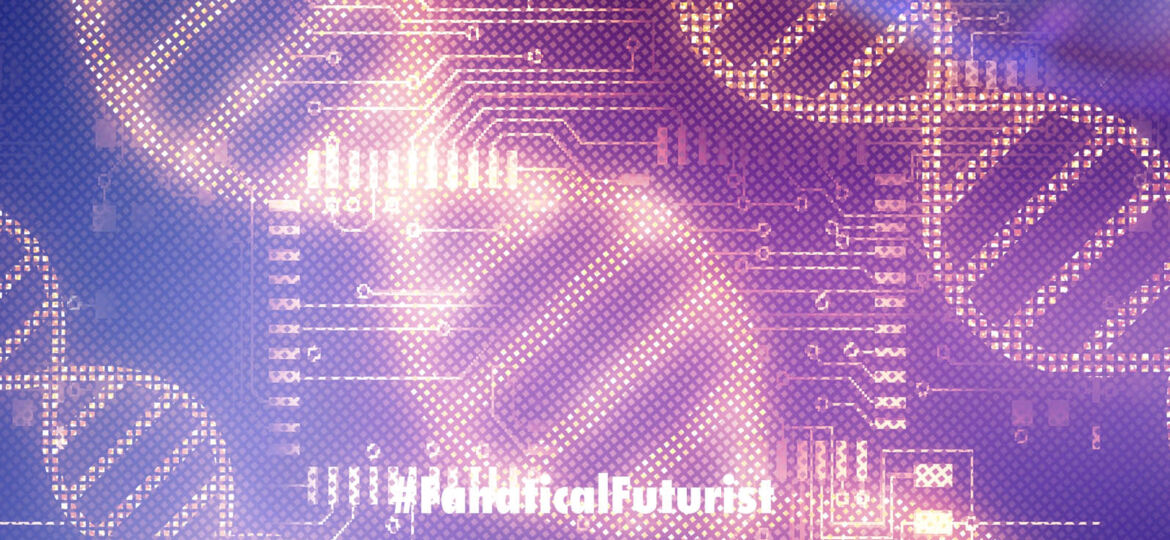
WHY THIS MATTERS IN BRIEF
The rate of information growth is now so vast that in a century the planet could end up being just one giant datacenter, so we need new ways to store huge volumes of data cheaply and easily.
 Love the Exponential Future? Join our XPotential Community, future proof yourself with courses from XPotential University, read about exponential tech and trends, connect, watch a keynote, or browse my blog.
Love the Exponential Future? Join our XPotential Community, future proof yourself with courses from XPotential University, read about exponential tech and trends, connect, watch a keynote, or browse my blog.
The amount of information that the world is creating has careered way beyond the zettabyte range and it’s accelerating. As a result organisations everywhere are struggling to store all this data let alone analyse it. But, what if you could store all this data in a space the size of a shoebox and then shove it all into the cloud like Microsoft are planning on doing? It’s possible with DNA storage – the next next evolution of hard drive and tape storage that companies today are already building.
As with most things, nature’s data storage system, DNA, far surpasses anything we’ve created and so far researchers have been able to demonstrate that just a single gram of it can hold a whopping 215 Petabytes of data. Now, researchers at the University of Illinois Urbana-Champaign have doubled DNA’s already incredible storage capacity by adding extra letters to its “alphabet” – to create an 11 base pair synthetic DNA alphabet like the ones I’ve discussed before that were used to create “alien” 8 base pair organisms.
DNA is naturally made up of combinations of four nucleobases: adenine, guanine, cytosine and thymine. Represented by the letters A, G, C and T, these bases group together in different sequences to form blueprints for every living organism. And this information storage system is incredibly dense.
That of course makes it a very attractive potential storage solution for the huge amounts of data modern society produces daily. And as if 215 Petabytes per gran wasn’t dense enough, the researchers on the new study have found a way to double it to over 500 petabytes per gram.
Along with the usual A, G, C and T, the team effectively added an extra seven “letters” to the DNA alphabet. These take the form of chemically modified nucleotides, opening up more varied combinations that allow more information to be stored within the same amount of physical space.
“Imagine the English alphabet,” said Kasra Tabatabaei, co-author of the study. “If you only had four letters to use, you could only create so many words. If you had the full alphabet, you could produce limitless word combinations. That’s the same with DNA. Instead of converting zeroes and ones to A, G, C, and T, we can convert zeroes and ones to A, G, C, T, and the seven new letters in the storage alphabet.”
Of course, adding extra nucleotides means that existing systems for reading data back won’t recognize them, so the team also developed a new system that can. The DNA strand passes through a nanopore in a specially designed protein, which can detect the individual units regardless of whether they’re natural or synthetic. Machine learning algorithms then decode the information stored within.
“We tried 77 different combinations of the 11 nucleotides, and our method was able to differentiate each of them perfectly,” said Chao Pan, co-author of the study. “The deep learning framework as part of our method to identify different nucleotides is universal, which enables the generalizability of our approach to many other applications.”
In addition to density, the new method also improves the writing speed of the data, which is normally a fairly sluggish process for DNA. This system roughly halved the amount of time it takes to write information to DNA.
This work could help make DNA a viable data storage system, although there’s still plenty more work left to be done.
The research was published in the journal Nano Letters.
















